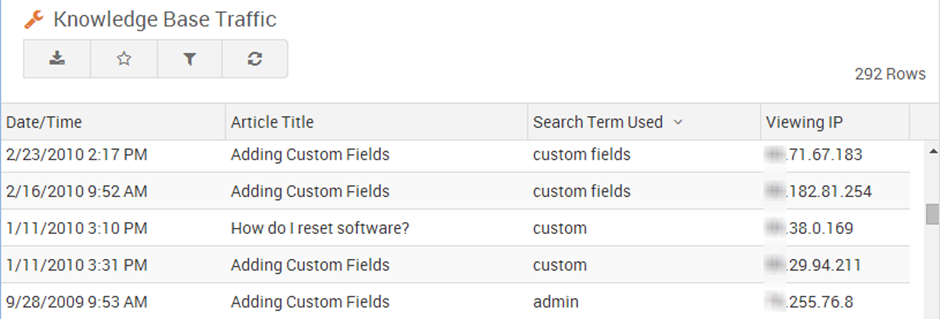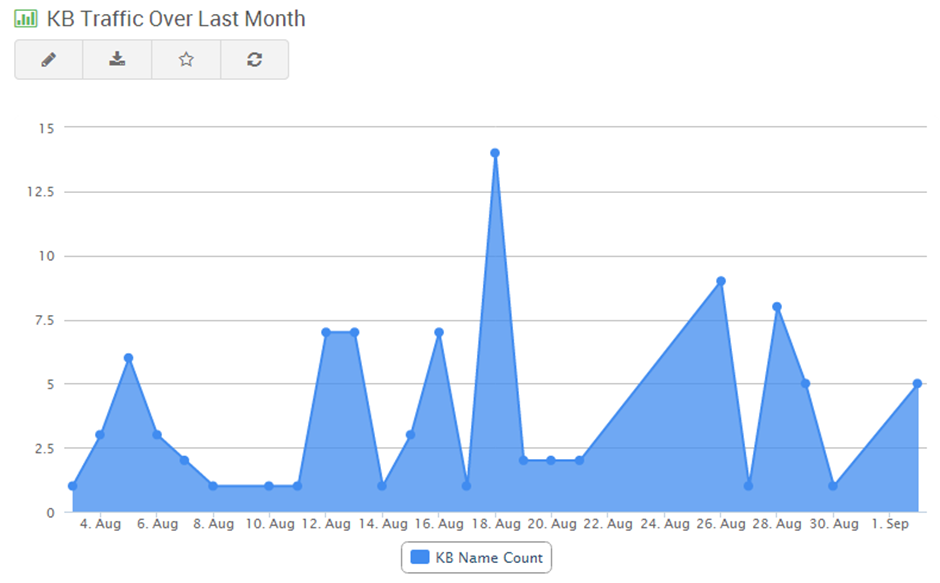Is your business struggling to keep up with customer demands? Are you looking for ways to improve efficiency and productivity? If so, then consider using knowledge base views. Knowledge base views can help your business by providing a one-stop shop for customers seeking information about your products or services. In addition, they can also help you streamline operations by providing employees with easy access to the information they need. So, how can you take advantage of knowledge base views in order to improve your business? Read on to find out.
What Is Knowledge Base Views?
Knowledge base views are an essential metric for measuring customer satisfaction. It allows businesses to get an idea of how many people have accessed their help center, giving them a clear picture of the overall customer journey and which topics may be more useful or interesting to their customers.
Understanding their knowledge base views can then be combined with other customer feedback to create a comprehensive picture of customer satisfaction and help businesses hone in on areas that require improvement. By doing so, businesses can build trust with their customers while also improving the efficiency and overall quality of their customer service.
Why Is It Important For Businesses To Track Their Knowledge Base Views?
Tracking the views of your business’s knowledge base is essential for understanding a customer’s journey and providing superior service. By understanding which pieces of your knowledge base are viewed most often, you can better tailor content to meet their needs.
Additionally, tracking knowledge base views grants insight into what topics customers want to learn about more and how customers interact with available answers. As a result, businesses can adjust their content creation and engagement strategies accordingly. Not only does this ensure customers are finding relevant content at the right time, it can also help save businesses immensely on support costs.
For these reasons, it’s in an organization’s best interest to track its knowledge base views periodically in order to give customers the best possible experience with their brand.
How Do You Calculate Knowledge Base Views?
Tracking your knowledge base views can be done in a few simple steps. First, consider choosing either Google Analytics or Mixpanel – both popular tracking platforms. Once your desired platform is selected, you’ll need to add the appropriate tag or code snippet to your knowledge base page.
From there, you can easily view, monitor and analyze data on who has viewed your knowledge base and how often. By understanding your customer’s usage patterns and what resources they’re consuming frequently, you’ll be better equipped to curate the most valuable content for them.
What Factors Affect Knowledge Base Views?
Two of the most important factors that affect knowledge base views are search engine optimization (SEO) and content relevancy. You should ensure that your knowledge base page is optimized for SEO so it appears high in search engine results. Also, make sure you keep up with trends in customer service by regularly adding new, relevant content to your knowledge base. This will keep customers coming back to your knowledge base for the answers they need.
Customer engagement is another factor that can affect knowledge base views. You should make sure your customer service team is actively engaging with customers and providing relevant feedback in a timely manner. Additionally, you should give customers an easy way to provide feedback on your service and knowledge base. This will make them more likely to come back and view the content in your knowledge base.
Finally, good design is key when it comes to engaging customers with a knowledge base page. Your page should be attractive and easy to navigate so customers can quickly find the information they need. Using visuals like images or videos can also increase customer engagement and make your knowledge base more interesting.
What Is A Good Knowledge Base Views?
A good knowledge view rate is when more than 75% of your users interact with and visit new content, whether through referencing guides, downloading documents, or even opening support tickets for assistance. This number gives companies insight into how effective their help centers are and can be used to judge the quality of information they provide their customers. Having a high-quality knowledge view rate is an integral part of ensuring user satisfaction and should be used regularly to assess the efficiency of any knowledge base.
Examples Of Knowledge Base Views
You can monitor the usage of your Knowledge Base by accessing the “Knowledge Base Traffic” report in Reports. This report will show you every time an article is viewed, what search term was used to get there and the IP address or username of the reader (for public Knowledge Base or Customer Hub users respectively).

The “KB View Report” will show you the total number of views for each article and how many users found it useful or not. This way, you can tailor your Knowledge Base library according to customer feedback.

Moreover, you can create custom reports with this Knowledge Base data and visualize it in graphs like the one below:

Strategies To Improve Knowledge Base Views
Here are some strategies that can help you improve the views of your knowledge base content:
Optimize Your Content for Search Engines:
Make sure all of your content is optimized for search engines such as Google and Bing, using relevant keywords to ensure potential customers can easily find it. This will increase the chance that your knowledge-base articles will be seen by the right people.
Promote on Social Media:
Use social media platforms such as Twitter, Facebook, and LinkedIn to share links to your knowledge base content and drive more views. You can also leverage influencers in your industry who can help spread the word about your content.
Add Interactive Elements:
Include interactive elements such as quizzes, polls, and videos to draw in more viewers. This will also make your content more engaging and enjoyable for readers.
Cross-Link Your Articles:
Link related articles to each other so it’s easier for customers to find the information they need. This will help reduce the number of clicks and encourage customers to explore your content.
Use Visuals:
Incorporate visuals such as infographics, diagrams and screenshots into your articles to make them more visually appealing. This will help draw in more viewers who are looking for quick, easy-to-understand information.
Monitor Your Content:
Keep track of your content’s performance by using analytics tools. This will help you identify which content is performing well and what needs to be improved.
Utilize Email & Newsletter Campaigns:
Email campaigns and newsletters promote your knowledge base content and drive more views. You can also ask customers for feedback on your content to ensure it’s meeting their needs.
Ask for Reviews & Testimonials:
Ask customers who have used your knowledge base content to write reviews and testimonials, which will help boost its visibility. This will also increase trust in your brand as customers can see that others are happy with the information they’ve found.
Utilizing these strategies can improve your knowledge base views and ensure that your content reaches the right people. With some effort and dedication, you’ll be able to boost the visibility of your knowledge base in no time
Conclusion
Implementing a knowledge base can help you save time, money and energy while improving your customer satisfaction scores. If you’re not using one yet, what are you waiting for? If you need some assistance getting started, our team would be happy to chat with you about how we can help get your business set up with a great knowledge base that meets all of your needs. Contact us today to learn more!

